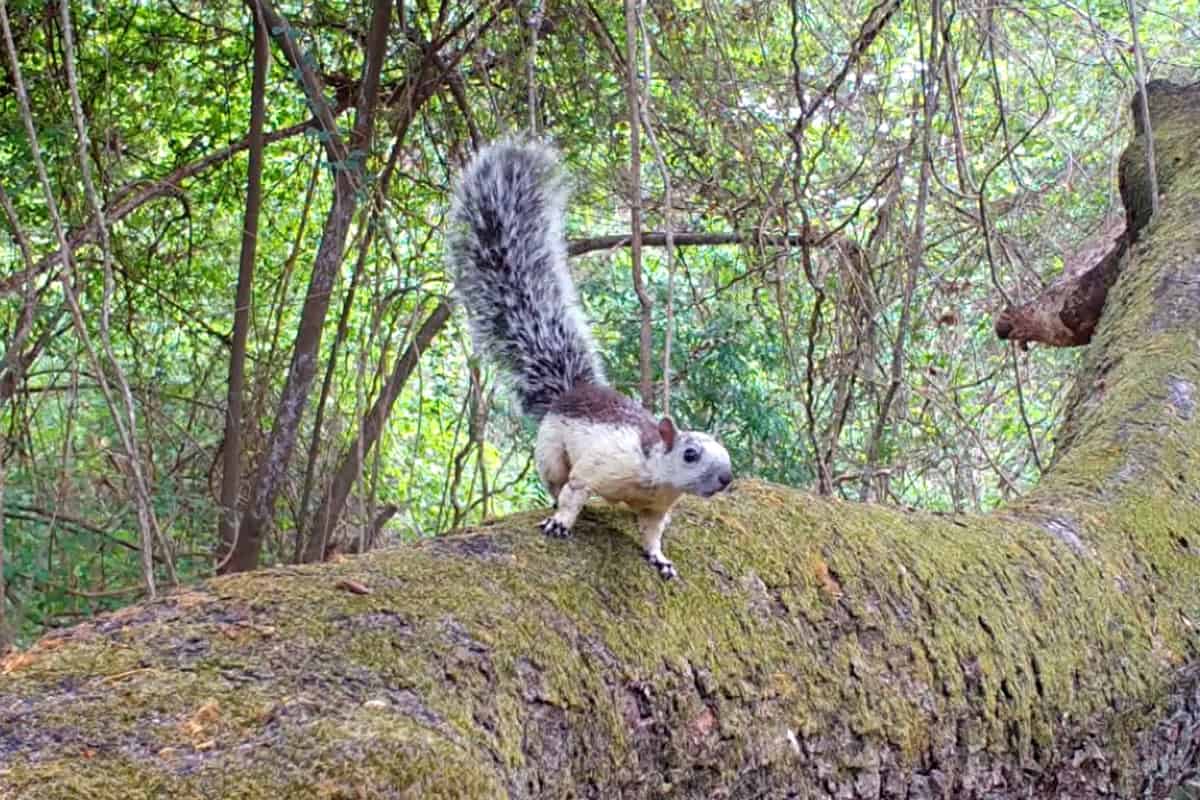The variegated squirrel might be all of the different colored squirrels that you’ve seen in Costa Rica. I’ll explain.
Variegated squirrels do squirrel things. They jump around the treetops, sometimes alone, sometimes in pairs or little groups that always seem to be arguing about something. They eat the food of the treetops – fruit and seeds. They get eaten by a wide variety of their scaled, feathered and furry forest brethren.
One squirrel-thing that this squirrel doesn’t do is bury a bunch a seeds all over the place, forget about them and thus accidentally plant a mess of trees. Unlike cold climate squirrels, which hide food for harsher times, variegated squirrels can find enough to eat throughout the year, so they don’t need to expend energy saving food for the future. While most squirrels get the ´Seed Dispersal´ patch on their scout uniform, variegated squirrels do not.
What the variegated squirrel lacks in the accidental tree planting department, it makes up for in the flamboyant colors department. Variegated squirrels can be reddish-brown and black, or orange, white and black, or mostly black and white, or a kind of cream soda-brown-white combo, or all black, or a bunch of other combinations. Catch all that? There are actually 14 described subspecies of variegated squirrel, and Costa Rica is home to seven of them.
You should see the range maps for variegated squirrels in Costa Rica. The country is broken up into seven different colored chunks with a subspecies assigned to each one. It’s not clear to me if each color variation is supposed to represent one of the seven subspecies because if that’s the case, I can tell you the natural world is anarchy compared to the nicely formed borders on the range maps. I’ve seen three variegated squirrels, all with wildly different color patterns, angrily chitter chattering at each other in the same tree.
If you’ve ever looked up in a tree, you may have seen a nest tucked between two of the top branches that made you think ‘What kind of nest is that? That’s just a lumpy bunch of leaves.’ Well, that was probably a squirrel’s nest. Variegated squirrels make those exact types of nests and around December or January, the winds start to really pick up in Guanacaste, and those shabby nests tend to fall. And when people go to investigate, they find the cutest darn mini-squirrel (or squirrels) that they’ve seen in their entire lives.
If the squirrels are lucky, the people will take them to a wildlife rehabilitation and release center like the one I worked at for several years. Every windy season, we would receive several boxes of somebody’s old t-shirt mixed with baby squirrels. With every box came weeks of work helping baby squirrels slowly become adult squirrels that could then be released. I can still hear the sharp squeaks that would begin to arise from the baby squirrel container when they started demanding to be fed.
I have been placing more camera traps in trees lately, so I have been increasing my store of variegated squirrel videos. Take a look at the video below and learn to love the varied colorations of the variegated squirrel as much as I do.
About the Author
Vincent Losasso, founder of Guanacaste Wildlife Monitoring, is a biologist who works with camera traps throughout Costa Rica. Learn more about his projects on facebook or instagram. You can also email him at: vincent@guanacastewildlifemonitoring.com






